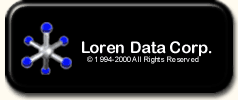|
|
|
|
COMMERCE BUSINESS DAILY ISSUE OF DECEMBER 22,1998 PSA#2247 MILSATCOM Terminals Program Office, 50 Griffiss Street, Hanscom AFB, MA 01731-1620 59 -- RECHARGEABLE BATTERY PACKS FOR THE PRODUCTIVITY RELIABILITY AVAILABILITY MAINTAINABILITY (PRAM) PROGRAM SOL n/a POC Peter Lewis, Contract Specialist, 781-271-6370; John Wilder, Contracting Officer, 781-271-6286. WEB: ESC Business Opportunities Web Page, http://www.herbb.hanscom.af.mil. E-MAIL: Click Here to E-mail the POC, lewisp@hanscom.af.mil. The MILSATCOM Terminals Program Office (ESC/MC) at the Electronic Systems Center, Hanscom AFB, MA is seeking information to determine the availability of state of the art Rechargeable Batteries as replacement batteries for the 1980's technology nickel cadmium (NiCd) and lead acid battery packs used in the MILSTAR Time Standard Module (TSM), Terminal Access Controller (TAC) and Atomic Frequency Time Reference (AFTR) line replaceable units (LRUs). The new battery packs will need to be form, fit function replacements for the existing TSM, TAC and AFTR batteries. The TSM presently contains a battery pack consisting of twelve AA NiCd cells. The nominal voltage of that TSM battery pack is 15Vdc, with a capacity rating (at 0.2C) of 700 mAhr. Its nominal discharge current is 10 mA, and its maximum discharge current is 70mA.It is specified over a temperature range of: (1) Storage: -40C to +55C degrees; (2) Discharge: -20C to +55C degrees and, (3) Charge: )C to +55C degrees. The TAC presently contains a battery pack consisting of one string of eight 1/2 AAA NiCd cells and two strings of 3 D NiCd cells each. The characteristics of the 1/2 AAA string are: (1) Nominal voltage: 9.6Vdc; (2) Capacity: At C: 60 mAhr; at C/10: 70 mAhr; and, (3) Output current (typical):10 mA (@25C degrees); 10 mA (@75C degrees). The characteristics of each set of D cells are: (1) Nominal voltage 3.6 Vdc; (2) Capacity: At C: 3.5Ahr; at C/10: 4.2 Ahr; and, (3) Output current (typical): 7 mA (@25C degrees); 7mA (@75C degrees). The operating temperature for the 1/2 AAA NiCd cells and the D NiCd cells is -40C to +70C degrees. The AFTR presently contains a battery pack consisting of eight sealed Lead-Acid cells. The nominal voltage of that AFTR battery pack is 16 Vdc, with a capacity rating: C = 2.5 Ahr. The 20 hr rate (at 125 mA) is 2.7 Ahr. The 10 hr rate (at 250 mA) 2.5 Ahr. The 1 hr rate (at 2.5 A) is 2.0 Ahr. It is specified over a temperature range of: (1) Storage: -65C to +65 C degrees; (2) Discharge: -- -65C to +65C degrees; and (3) Charge: -40C to +65C degrees. ESC/MC is seeking this information to determine the availability of state-of-the-art Rechargeable Batteries which offer the most increase in capability while yielding the greatest Operation & Support cost savings over time. Accordingly, ESC/MC seeks to incorporate new technological advances to improve current battery performance and eliminate current battery limiting conditions such as NiCd memory and limited NiCd charge life cycles. For example, to provide ESC/MC with the optimal operational capability, the following new Rechargeable Battery Pack characteristics are desired: (1) Increased Capacity: The new battery packs for the TSM and TAC should provide a significant increase in capacity over the present NiCd battery packs, (2) No Memory Effect: The new battery packs for the TSM and TAC should be of such a chemistry that they have no "memory effect" so that the charge can be topped off at any time. (3) Increased Number of Charge Cycles: The new battery packs for the TSM and TAC should be capable of providing improved charge/discharge life cycles versus current MILSATCOM NiCds before the capacity of those battery packs drops below 80% of their rated capacity. (4) Smart Batteries: The new battery packs for the TSM and TAC should contain technological advances which will allow the battery packs to be connected to a PC so that a number of of different battery characteristics, such as the number of charge/discharge cycles already undergone by the battery, the state of the charge of the battery, the capacity remaining in the battery, the age of the battery, etc. can be monitored on a PC. (5) Shelf Life: The new battery packs for the TSM and TAC should have a shelf life of at least seven (7) years. Interested companies must contact the POC within twenty (20) working days of publication of this announcement to declare their interest in participating in this market survey and to request a copy of the Source Control Drawings (SCDs) for the TSM, TAC and AFTR Battery Packs. Also, companies responding to this announcement must submit: (1) A brief technical description of their rechargeable batteries (not to exceed five pages); (2) A description of the extent to which their batteries have undergone development and production; (3) A discussion by the company what would validate that the increased capacity, no memory effect, increased number of charge cycles, smart battery and shelf life requirements specified above can be met. Additionally, companies responding to this synopsis must provide a brief description of their related manufacturing and development experience (not to exceed two pages) to the POC. Responses must also include company name, address, point of contact, telephone number and facsimile telephone number. This market survey may not lead to a future procurement. It should not be construed as a Request For Proposal, an Invitiation For Bid nor as a commitment by the Government to issue an order or otherwise pay for the information solicited. The Government reserves the right to reject, in whole or in part, any response to this market survey. Responses should be addressed to: ESC/MCK, ATTN: Peter Lewis, 50 Griffiss Street, Hanscom AFB, MA 01731-1620. Posted 12/18/98 (D-SN281880). (0352) Loren Data Corp. http://www.ld.com (SYN# 0178 19981222\59-0003.SOL) 59 - Electrical and Electronic Equipment Components Index Page |
|

